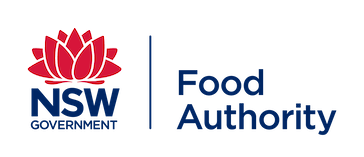Free range
There is currently no legal definition of ‘free range eggs’ in Australia, however a new information standard is being developed under Australian Consumer Law.
There are a number of voluntary industry accreditation schemes surrounding use of the term ‘free range’ on egg cartons.
Producers who choose to use, or not use a voluntary industry accreditation system for ‘free range eggs’ must not provide information that is false, misleading or deceptive under Australian Consumer Law.
A new National Information Standard
The new national free range egg information standard came into effect on 26 April 2017 with a 12 month transition period, therefore, commencing on 26 April 2018.
The new information standard, registered under the Australian Consumer Law, states the meaning of the term free range eggs as eggs laid by hens that:
- had meaningful and regular access to an outdoor range during daylight hours during the laying cycle
- were able to roam and forage on the outdoor range
- were subject to a stocking density of 10,000 hens per hectare or less
In addition all eggs labelled as ‘free range’ must have the stocking density prominently displayed on the packaging.
For further information on the term ‘free range’ as well as labelling and display requirements, you can access the Australian Consumer Law (Free Range Egg Labelling) Information Standard 2017 here. You can also download the accompanying Explanatory Statement here.
Accreditation schemes for free-range
There are a number of voluntary egg production accreditation schemes concerning ‘free range’ in Australia that egg producers can choose from.
Those listed below all adopt the minimum standards outlined in the Model code of practice for the welfare of animals - domestic poultry 4th edition and add their own specific standards to accredit eggs as free-range. Each includes independent auditing.
The table below was developed by the NSW Food Authority in consultation with the NSW Egg Labelling Forum to help consumers make informed choices about the eggs they buy. The information in the table has been provided by the certification schemes.
Schemes may have additional standards that they apply to free-range egg production. Contact the schemes for further information.
If you run a free-range egg accreditation scheme and would like to have your scheme reviewed for inclusion in the table, please contact the Food Authority on 1300 552 406.
Egg production systems
There are 3 systems of egg production that are guided by the national Model code of practice for the welfare of animals - domestic poultry 4th edition.
According to the Model Code, for eggs to be defined:
- free-range: hens had meaningful and regular access to an outdoor range during daylight hours during the laying cycle with a maximum stocking density of 10,000 hens per hectare
- barn laid: hens are free to roam within a shed which may have more than one level
- cage: hens are continuously housed in cages within a shed
Irrespective of the system of production:
- producers must comply with the animal welfare provisions of their State or Territory. In NSW producers must comply with the Prevention of Cruelty to Animals Act 1979
- eggs are a good source of nutrition
- food safety issues for eggs are the same and these are regulated by the Australia New Zealand Food Standards Code and the Food Act 2003 (NSW) and Food Regulation 2015
Egg producers should meet the minimum standards of care for hens for each system of production as set out in the Model Code.
Free-range egg standards in the Model Code include:
- hens have access to an outdoor area (range) during daylight hours for a minimum of 8 hours per day, with the exception of adverse weather conditions or serious disease outbreaks when birds may be kept inside.
- hens on the range must have ready access to shaded areas and shelter from rain, and windbreaks should be provided in exposed areas.
- every reasonable effort must be made to provide protection from predators at all times.
- a maximum of 1,500 hens per hectare is suggested, however, higher numbers are acceptable if hens are regularly rotated onto fresh range areas and close management is undertaken which provides some continuing fodder cover.
- acceptable farm management practices.
